The Truth About Lash Adhesives and Humidity
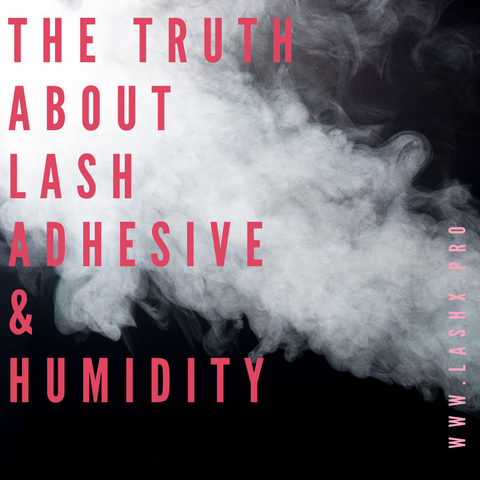
Nanos, Nebulizers, Humidifiers, and Therma-hygrometers Oh My!
After my last blog post The Truth About Lash Adhesives, and Our Health, I have been flooded with adhesive questions and it is clear to me there is still a lot of confusion out there. Specifically lash pros are confused about humidity, having it, not having it, and creating it.
I wanted to get to the bottom of this humidity mystery, since I have accounts all over the world and none of the accounts using my products have had issues with humidity levels. I couldn't understand why companies were selling all of these weird contraptions, especially since everything we know about cyanoacrylate is that it should not be shock cured.
How Many of you have been told,
"Humidity—or lack thereof—can make all of the difference in your lash services. Too much moisture in the air causes shock polymerization, resulting in a weak bond; too little, and the adhesive can take forever to bond. To create the optimal environment for lashing (humidity at somewhere between 40 percent and 70 percent), you need to buy ______(fill in the blank)." ?
I am going to tell you the truth:
You don't need to buy anything, but a better adhesive!
The confusion lies in the use of the word humidity. Someone some where read that cyanoacrylate lash adhesives needs to be in 40-70% Relative Humidity, and they confused this with actual humidity. Cyanoacrylate adhesives need to be in 40-70% Relative Humidity not actual.
There is a lot of misinformation out there about lash adhesives. As stylists we are told different things from different trainers and companies and its very frustrating and confusing. The truth is that actual humidity levels are very rarely an issue at all when performing services in a climate controlled setting. If we are having issues with dry time or retention it is more likely that; our adhesive is poor quality, one that is too thick, or that we don't have proper technique, and are using too much.
Why Relative Humidity Isn't an Issue:
Cyanoacrylate, the main ingredient in all lash extension adhesives, is sensitive to Relative Humidity, not actual humidity. Relative Humidity is the measurement of the amount of moisture present, to the ratio of moisture that temperature air can hold. For Relative Humidity to be outside the 40-70% range we would be physically uncomfortable and would put on the heater or air conditioner. For example, for relative humidity to be lower than 40% you would realistically need to be in a room that is hotter than 90 degrees and in relative humidity of 70% you and your client will likely be sweating.
As a trainer and a last stylist, I have had the privileged to work in different climates all over the world, Yuma Arizona mid day in the summer's lowest humidity level is 20% humidity outside. The adhesive inside a climate controlled studio should work perfectly without any interventions. The same is true on the other end of the spectrum. In Barbados with 90% humidity outside, and air conditioning inside, Relative humidity is a perfect level for instant dry lashing. I have thousands of people around the world using my adhesive, I only mention that because it's a daily case study, none of those partners have had issues due to Relative Humidity. Usually retention issues or dry time issues will be solved by using less product.
So Why Do People Have Issues With Retention and Dry Time?
The most common reason there is a slow dry time is either a lower grade cyanoacrylate adhesive is being used, (See my blog on lash adhesive qualities) or too much product is being applied. Cyanoacrylate is meant to be applied in a very very thin layer. Stylists sometimes think that more glue means more hold, but its actually the opposite. The less of this product is used the better the bond will be, as long as you have a complete application. The adhesive does cure by the moisture in the air and should be dry to touch pretty instantly. The outer coating of the adhesive has formed and dried but the adhesive is still drying on the inside for up to 48 hours. This is how you want your adhesive to cure, slowly, so that the bond will be strong and flexible.
If you feel like you need to use an additional tool in order to cure your adhesive, because it isn't drying to touch instantly, it's a pretty big sign that you used way too much. If you do shock cure this with a nanomister or nebulizer the result will be thick hard glue chunks. With a thin application the adhesive will instantly "helmet" or seal and should be a flexible bond, meaning it should be able to move with the hair and not cause any damage. When applying you should not really see the adhesive at all. It should dry clear with no thickness on the lash.
What to Look for in an Adhesive
8 years ago, I had become allergic to all the lash products on the market. Many of my good clients started to have reactions and I started to lose great clients because they too had allergic reactions. We were all red and puffy and in pain but more sad about not being able to wear lash extensions! At first I was told from the company I was purchasing my adhesive from that we were all just having reactions to the cyanoacrylate but that didn't satisfy me because honestly, I didn't want to believe that I could never wear lash extensions again. After lots of research and working with an amazing team of chemists I became aware that I, and most of my clients were allergic to the formaldehyde that was being produced in the curing or polymerizing stage of the cyanoacrylate. At that time sensitive adhesives would produce less of this, but have no retention and longer holding adhesives would have huge reactions. To make a long story short, finally LAshX Speed Adhesive was born, to satisfy my own needs. The formula had to be instant drying, AND long lasting. Our adhesive retention is (6-8 weeks with aftercare) and safe for sensitive people. This doesn't mean there will never be anyone allergic to the LAshX Speed Adhesive ever, but 99% of my clients were able to come back to me and I have been wearing lashes for the last 8 years!
In This Process, I Have Learned A Lot About Adhesives and The Chemistry Of Cyanoacrylate.
There are different grades and qualities of cyanoacrylates, some are made for skin contact and medical use, even in the body, and some are industrial grade, used for weapons for example. You want to make sure your adhesive is a medical grade quality, hydroquinone free, that it is very thin, has no fume, and a seals with a flexible hold.
What Do Nanomisters and Nebulizers Do?
These are devices that add tiny particles of water to the air. In my experience, these both add too much humidity and will almost always shock cure the adhesive. The result of using these will be that the lashes cure too fast and can become brittle and possibly break. Lash adhesives need to cure slowly. Even though they dry instantly to the touch, helmeting when applied properly, it takes 48 hours for the bond to fully cure. If you allow the adhesive to do this properly you will have a more flexible, durable bond that is healthier for the lash. I feel that Nanomisters and Nebulizers are just unnecessary and not worth the risk of damage. If you feel that a device is needed to dry the adhesive faster, chances are you are using too much product.

What about Sealers?
Sealers are often toxic. Sealers are usually liquid Teflon, that people use to coat the lash. They often come from overseas with very little if any regulation. In my experience there is no retention gained with these risky products. LAshX partners are able to get 6-8 weeks between fills on average, limited only by the typical lash cycle, so there is no need for us to add this risky products to the eye area. Sealers can build up on the lashes causing them to become brittle and damage can occur.
How Do We Get 6-8 Week Retention?
LAshX is a system designed to improve natural lash health, and prolongs the natural lash growth cycle resulting in maximize retention. Every one of our LAshX clients goes home with the LAshX Lash Cleanse, to keep their lashes oil and bacteria free. This formula has biotin and panthenol to improve lash health. The main ingredient is aloe, which is a natural anti-septic. The cleaner keeps the lashes soft and supple so no tension is on the hair follicle and free of any bacteria. I recommend client use it after sweating or crying to remove salts that can make lashes dry out and flake off.

This is a list of gadgets that actual lash companies told stylists to buy to help their adhesives last better, but I will explain why they are not needed:
1) Therma-hygrometer:
This measures actual temperature and Humidity but that will not tell you your Relative Humidity. In order to figure out Relative humidity you need a lot more information like the ratio of the water vapor pressure to the saturation water vapor pressure (over water) at the gas temperature: RH = Pw/Pws · 100% (HUH?). So, in other words don't waste your money on this because it doesn't provide useful information in terms of your adhesive.

2) Humidifiers and Dehumidifiers
Not necessary as again Relative Humidity is what matters. If you are comfortable your temperature and humidity are fine. If you need trouble shooting try less adhesive or a better quality, thinner formula.
3) Using plants for their transpiration properties
I have not studied botany but I think adjusting a rooms humidity by plant would be very difficult. Plants do emit humidity but how could you control it. Things like the type of plant, soil and season effect how much humidity a plan transmits. This one seems silly to me. Plants can be great for other reasons!
Bottom Line: Don't sweat the humidity, pun intended.



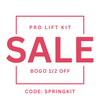
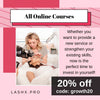
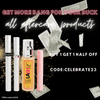
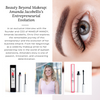






Comments
Comments